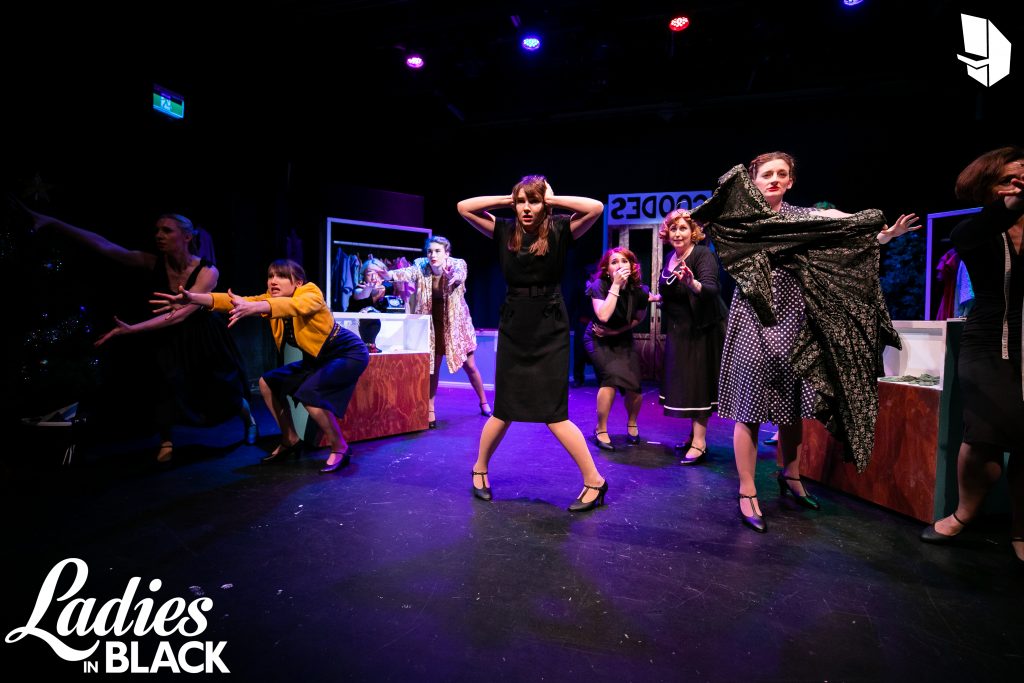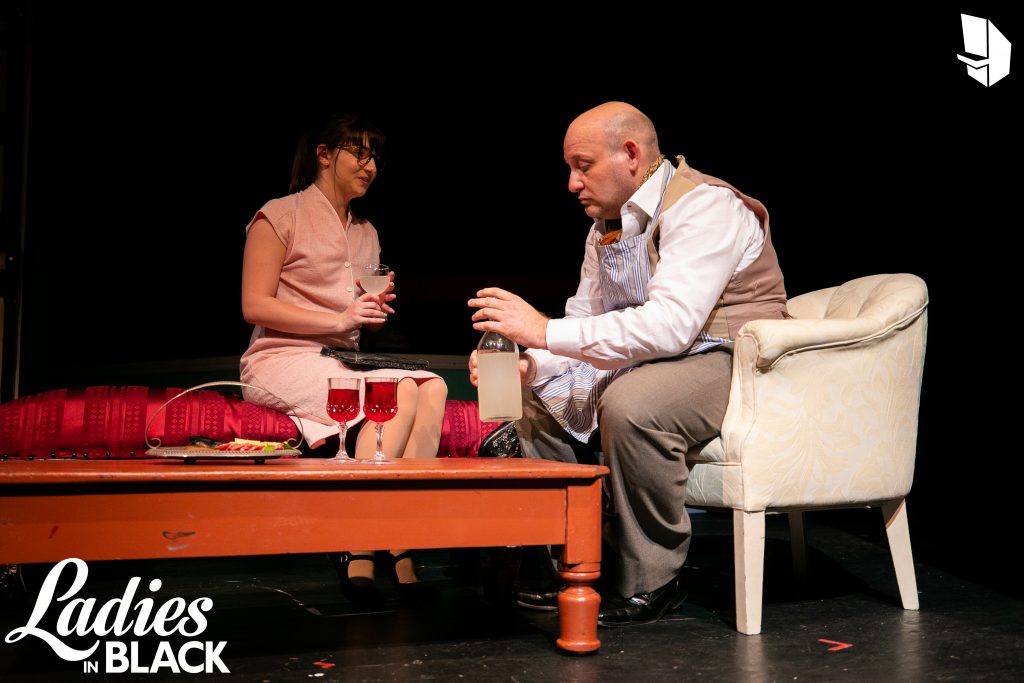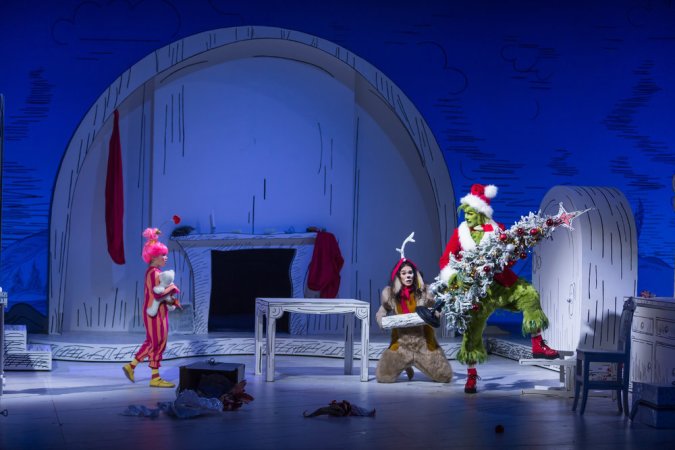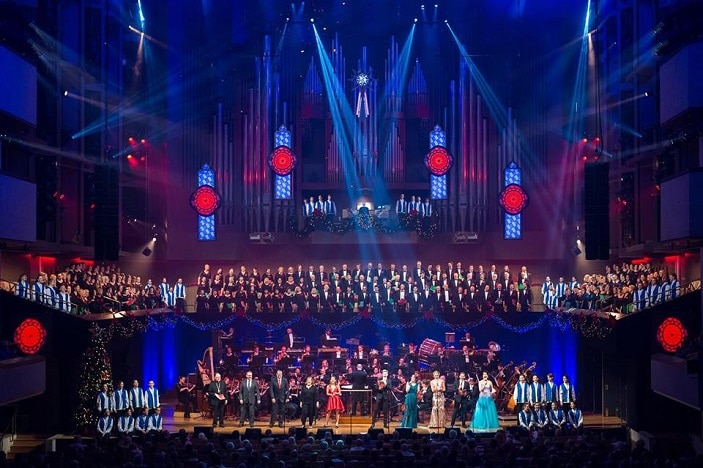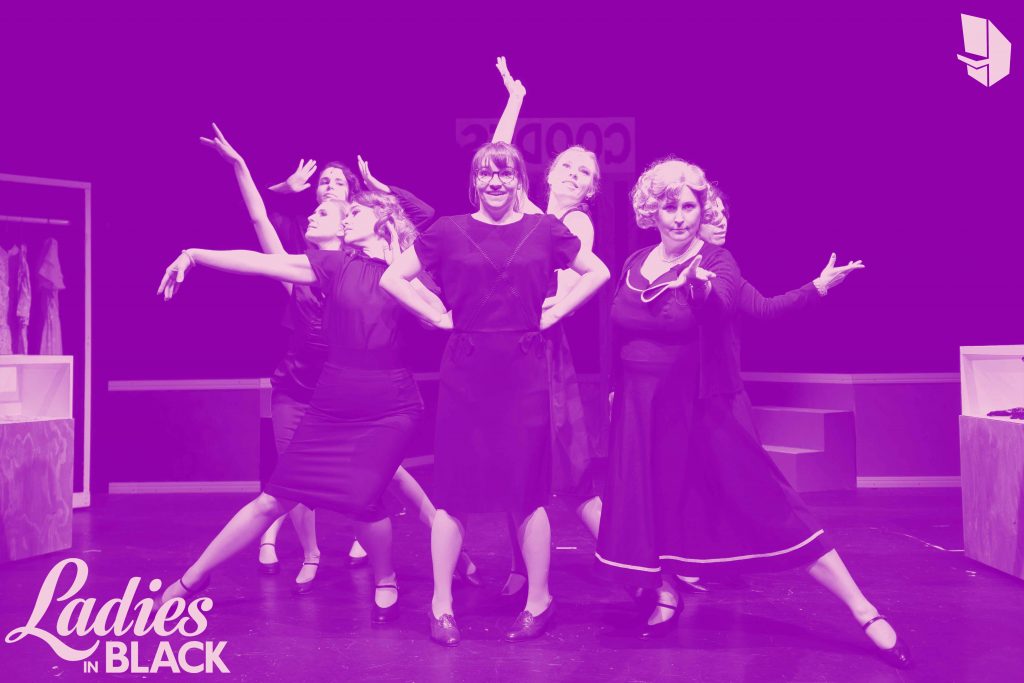
‘Ladies in Black’ // Brisbane Arts Theatre
‘Ladies in Black’ was easy-going.
The fashionable coming-of-age musical, ‘Ladies in Black’ is proving it’s here to stay, with Brisbane Arts Theatre being the latest in a line of companies to produce the hit.
Written by revered author Madeleine St John, the original book has been a delicacy among its fan base, thanks to its gentle wit and success in capturing an era. Heading to stage, the publication, turned motion picture, and now turned musical, is a bright adaptation, still rich in Australian quirks and cultural sentimentality.
At the heart of the story is Lisa; a 17-year-old girl with a passion for literature and a desire to go to University. After securing a Christmas holiday job in a department store, Lisa meets a group of ladies who broaden her ideas on the world. The ladies in black, in turn, are also influenced by the new recruit, and consequently, each other.
Fitted with attitude and style, ‘Ladies in Black’ was written for the stage by Carolyn Burns, with music and lyrics by Tim Finn. While the songs are catchy, upbeat and varied enough, the script is a slow boil with a quick resolution. That is, action drags on before the main storyline is concluded in the last ten, or so, minutes of the production. Despite being filled with enough subplots to keep an audience going per se, more exploration of the story’s emotional crux would have benefited the script greatly.
Regardless, this is a musical purposefully constructed with low-stakes drama. For Brisbane Arts Theatre, their rendition was feel-good and familiar for those who may reminisce on an era gone by. The plot, while not overly challenging, drew on cheap and easy laughs (like women gossiping over tea, calling their husbands bastards) and had the audience along for the ride. A nice feature was the evident respect between young and older women, and the clear age diversity amongst the characters onstage.
Director Loic Valmy, effectively blocked the scenes into sections onstage, in an effort to resemble different locations within the script – department store levels, character’s homes, parks and beaches. The elevated platforms situated at the back of the stage added levels and the audience’s gaze moved downstage and around the space with the defined lighting.
Set design by Valmy and Tim Pierce was simple, using a framed structure that created a reversed overarching shopfront of the Goodes department store. To further distinguish alternate scenes, additional set pieces moved in left and right (like chairs, counters, tables) or flipped around to reveal clothing racks or walls. During such changes, everything seemed to move and there were many elements to organise and set. While Valmy successfully plotted the show to run from scene to scene, some clunky and unorganised scenes changes ultimately affected the overall pace and dynamics of the production.
There was also a sightline problem that occurred, masking action when actors played downstage and others played upstage directly behind them. Due to these straight angles, actors were in a line and the placement of certain set pieces interfered with action and fouled projections. Cast members towards the front of the stage, blocked the action happening in the back corners. From an audience perspective, these obstructions meant we often strained to see what was happening.
Valmy also attempted to break the fourth wall in his directorial style. While this turned characters into narrators of their own lives, it did lose theatricality in scenes where emotional moments could have been enhanced – especially in the father and daughter dynamic of the lead characters. It made the play lose the potential for genuine connections.
A moment that must be mentioned, as what felt like an intentional directorial choice, was an unnerving, over-the-top sex scene. This audibly shocked the audience and completely detracted from the quality that is meant to exude from such poignant characters. In a story that represents style, this choice made the show feel trashy, and the opposite of what was meant to be reflected in the script. Put simply, the show didn’t need it. The touch between the two characters in this scene and their chemistry was enough to imply what was to come.
While there were some cast reshufflings on the night due to illness and other commitments, the strong team worked hard to deliver realistic performances. A strong standout with sharp movements and a stage presence that radiated confidence was Jessica Ham as Patty. Despite the inner torment of her characters questionable infertility, Ham successfully delivered a strained woman, struggling to interest her husband. Ham hid behind her stylish store-clerk persona with admirability in an unwavering well-tuned portrayal. Ham’s vocal and dance abilities were also evidently strong and her chemistry with Tristan Ham, who played her quiet and unsure husband with great sensitivity, was undeniable and a highlight.
Also, among the strong performances of the night were the three ‘Continentals’ – Laura Fois as Madga, Damien Campagnolo as Stefan and Ben Kasper as Rudi – who were all equally superb. The trio provided exceptional comic timing, highlighting differences between cultures. Fois was urbane and chic as the Hungarian refugee who manages the high-class gowns department. Campagnolo showed brilliant versatility, also portraying Lisa’s Dad, Mr Miles, in a heart-warming and tender performance. Campagnolo’s Stefan was loving and tender in comparison. And Kasper was wildly exuberant in his European ways of life as the self-determined Rudi who wants to settle down.
As a featured ‘Ladies in Black’ heroine, Hannah Kassulke was perfectly explorative and curious as unlucky in love Fay. She portrayed her character with sincerity and a mature innocence that dazzled audiences. As the teenage graduate, Lisa, Jordan Boyd was a pocket-rocket, driving the scenes ‘to and fro’. There was honesty in her performance as Boyd realised a dreamer excited by life’s opportunities.
Costuming, designed by Kirily Jago, also worked well, with a highlight being the individualistic nature of every woman’s black uniform. It all worked cohesively and looked pretty. In opposition to this, there could have been more focus given to the displays in the glorious gowns department of Goodes, as there was seemingly a lack of attention to detail. Especially for what should have been expensive, life-changing dresses, it felt as though they were hastily thrown onto cheap wire metal coat hangers. It was sad to see the visual aesthetics suffer because of these unexplored decisions.
The spirit of ‘Ladies in Black’ thrives, with a strong cast that features many great roles for women. Brisbane Arts Theatre have developed a show with a strong emotional core that is also an easy-going night out at the theatre. In a true laidback Australian style, the show will leave you smiling, one way or another.
‘Ladies in Black’ performs until Saturday, 7 September 2019. To book tickets, visit Brisbane Arts Theatres Website – ‘Ladies in Black’.
Disclaimer: Cast / Production Members working on this show also work for Theatre Haus, but rest assured, we always take steps to ensure our reviews maintain their integrity and are free from bias.





